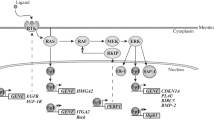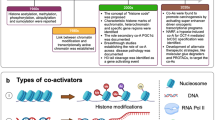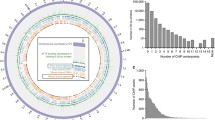Abstract
This issue attempts to give a ‘state of the art’ overview of the AP-1 transcription factor family, a fundamental class of transcriptional regulators. The AP-1 family consists of several bZIP (basic region leucine zipper) domain proteins, the Jun, the Fos, and the ATF subfamilies, which all have to dimerize before they can bind to their DNA target sites. AP-1 has been a paradigm for transcription factors that regulate many aspects of cell physiology in response to environmental changes such as stress, radiation, or to growth factor signals thereby acting like an environmental biosensor. Although we have come a long way from discovering its major components, the heterodimer between c-Fos and c-Jun, it is daunting to realize that we still lack a detailed molecular knowledge of how these factors interact with DNA to activate or repress genes in the nucleus. It is also not clear how the response of AP-1 to growth factor signaling from the cell surface to the nucleus is interpreted at the molecular level and whether AP-1 is relevant for human disease.
Similar content being viewed by others
Author information
Authors and Affiliations
Rights and permissions
About this article
Cite this article
Wagner, E. AP-1 – Introductory remarks. Oncogene 20, 2334–2335 (2001). https://doi.org/10.1038/sj.onc.1204416
Issue Date:
DOI: https://doi.org/10.1038/sj.onc.1204416
- Springer Nature Limited
Keywords
This article is cited by
-
De novo assembly, transcriptome characterization and marker discovery in Indian major carp, Labeo rohita through pyrosequencing
Genetica (2022)
-
Heat stress-induced HSP90 expression is dependent on ERK and HSF1 activation in turbot (Scophthalmus maximus) kidney cells
Cell Stress and Chaperones (2021)
-
A negative feedback loop between XBP1 and Fbw7 regulates cancer development
Oncogenesis (2019)
-
The Toll Pathway in the Central Nervous System of Flies and Mammals
NeuroMolecular Medicine (2018)
-
Gene expression profile during proliferation and differentiation of rainbow trout adipocyte precursor cells
BMC Genomics (2017)




